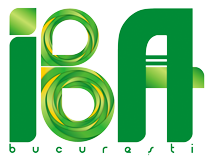EFSA Releases Updated Fluoride Safety Guidelines
The European Food Safety Authority (EFSA) has published updated guidelines on fluoride safety, addressing exposure from water, food, and dental products. While fluoride plays a critical role in preventing tooth decay, excessive exposure can lead to health issues, making these new recommendations highly relevant for policymakers and consumers alike.
Why Were the Guidelines Updated?
Fluoride is widely recognized for its benefits in dental health, particularly in preventing cavities. However, excessive fluoride intake can result in dental fluorosis—visible discoloration or mottling of teeth—and, in severe cases, skeletal fluorosis, which affects bone structure and strength.
EFSA’s updated guidelines reflect the latest scientific research and aim to set a safe daily intake limit that balances the proven dental health benefits of fluoride with the potential risks of overexposure.
Key Recommendations from EFSA
- Revised Daily Intake Levels – EFSA has established updated reference values for total daily fluoride intake, considering all exposure sources, including drinking water, food, and dental products.
- Special Focus on Children and Adolescents – Children are particularly vulnerable to excess fluoride during tooth development, so the guidelines place strong emphasis on preventing overexposure in younger age groups.
- Monitoring Water Fluoride Levels – EFSA encourages national authorities to regularly monitor fluoride concentrations in drinking water to ensure they remain within safe limits.
- Clear Labeling of Dental Products – Toothpastes and other fluoride-containing dental products should include clear labeling of fluoride concentration, allowing consumers to avoid exceeding recommended limits.
Impact on Public Health Policies
These updated guidelines are expected to influence public health policies across EU member states. Areas likely to be affected include:
- water fluoridation programs,
- regulation of fluoride levels in food and beverages,
- labeling and usage recommendations for oral care products.
The ultimate goal is to maintain the benefits of fluoride for oral health while preventing excessive exposure that could harm vulnerable populations.
What Consumers Need to Know
For the general public, EFSA’s updated recommendations provide clarity and reassurance. Consumers—especially parents selecting toothpaste and mouthwash for children—can now rely on evidence-based exposure limits.
The guidelines also stress the importance of proper product use (e.g., using only a pea-sized amount of toothpaste for young children) and public education on safe fluoride intake.
Conclusion
EFSA’s updated fluoride safety guidelines mark an important step in public health protection. They provide a scientifically robust framework for managing fluoride exposure and support policies designed to ensure both effective dental health protection and prevention of overexposure risks.
For consumers and policymakers alike, these new guidelines offer a balanced and evidence-based approach to fluoride safety in Europe.
Source AFFIDIA JOURNAL.

